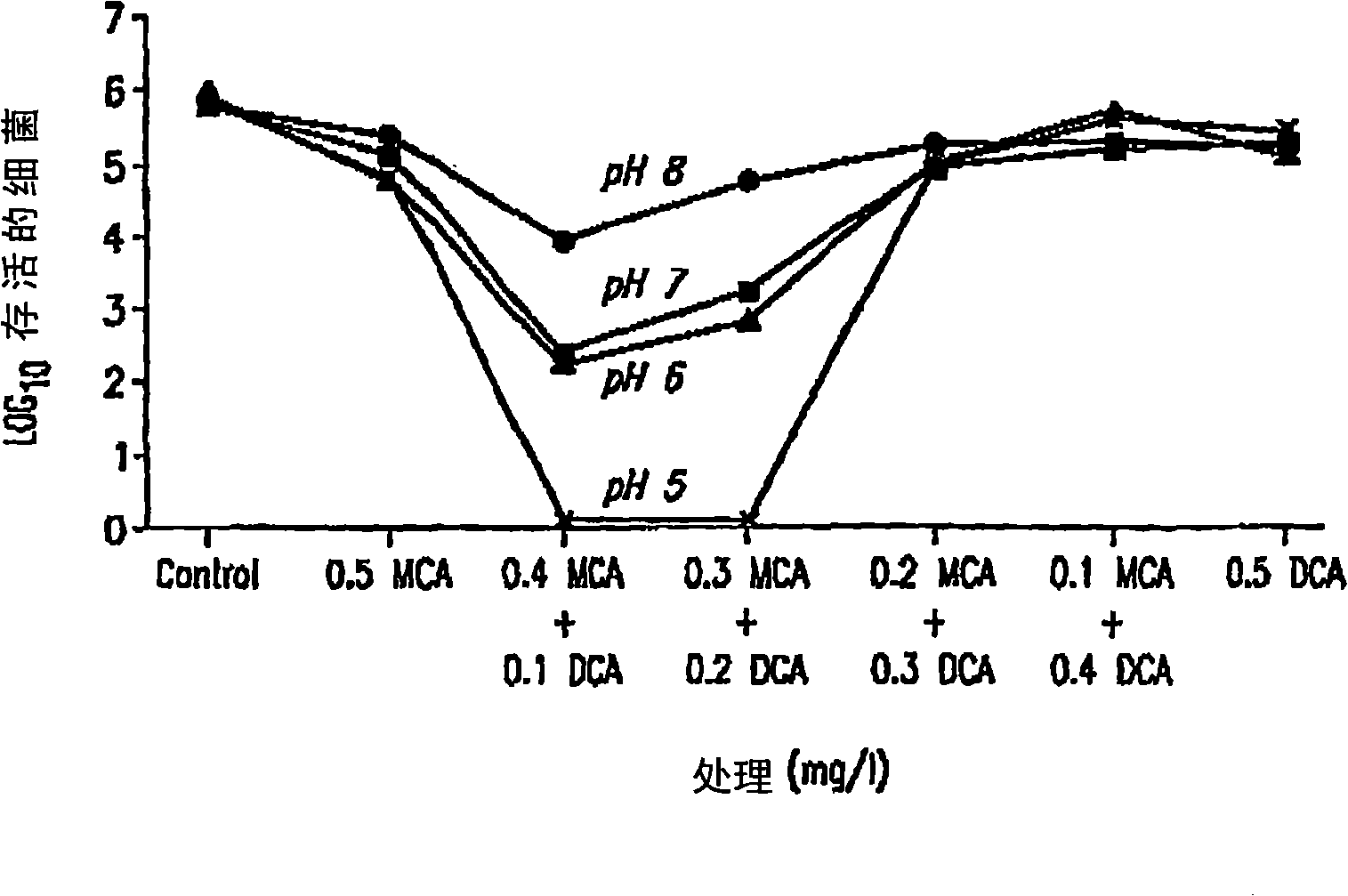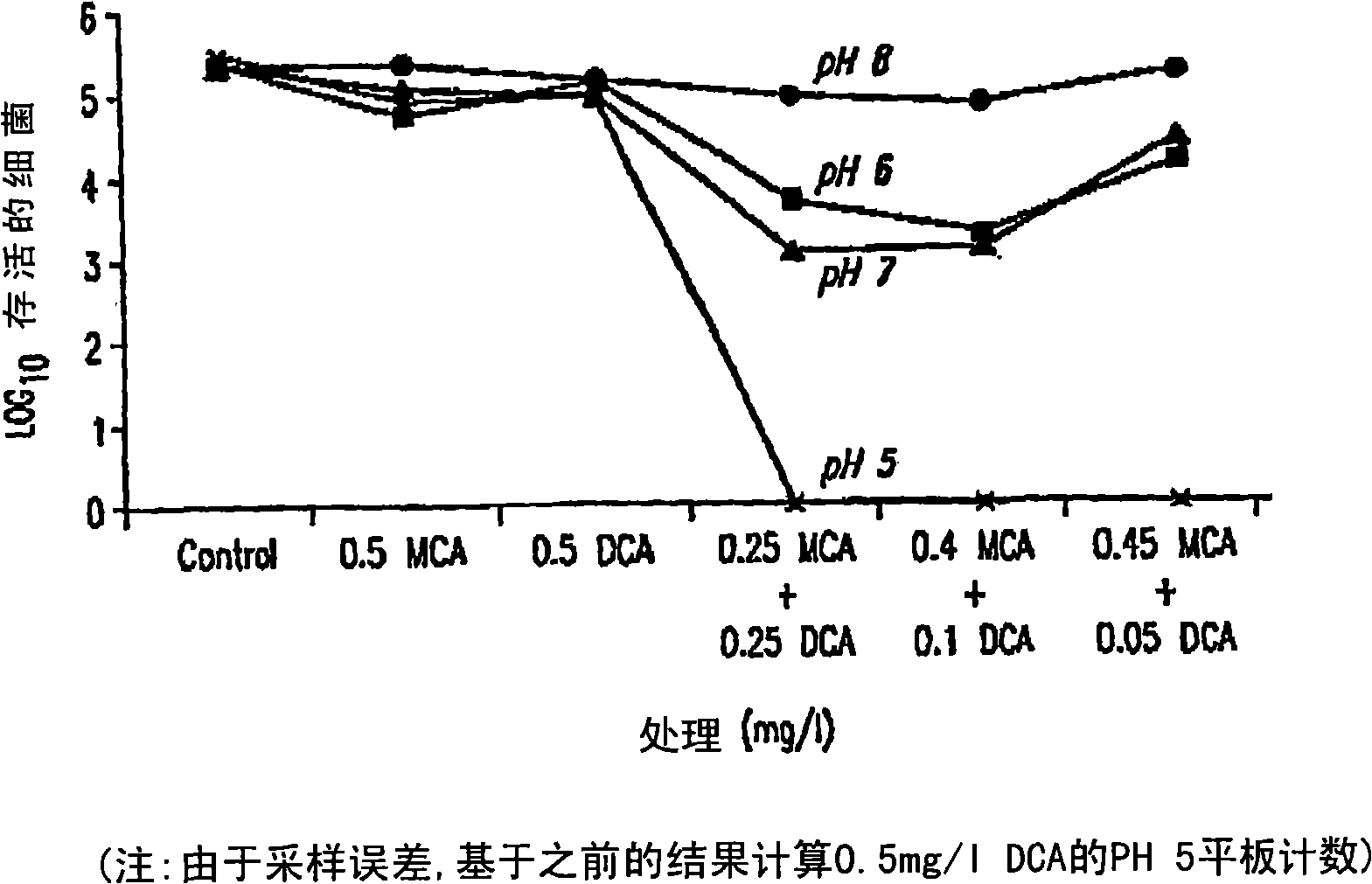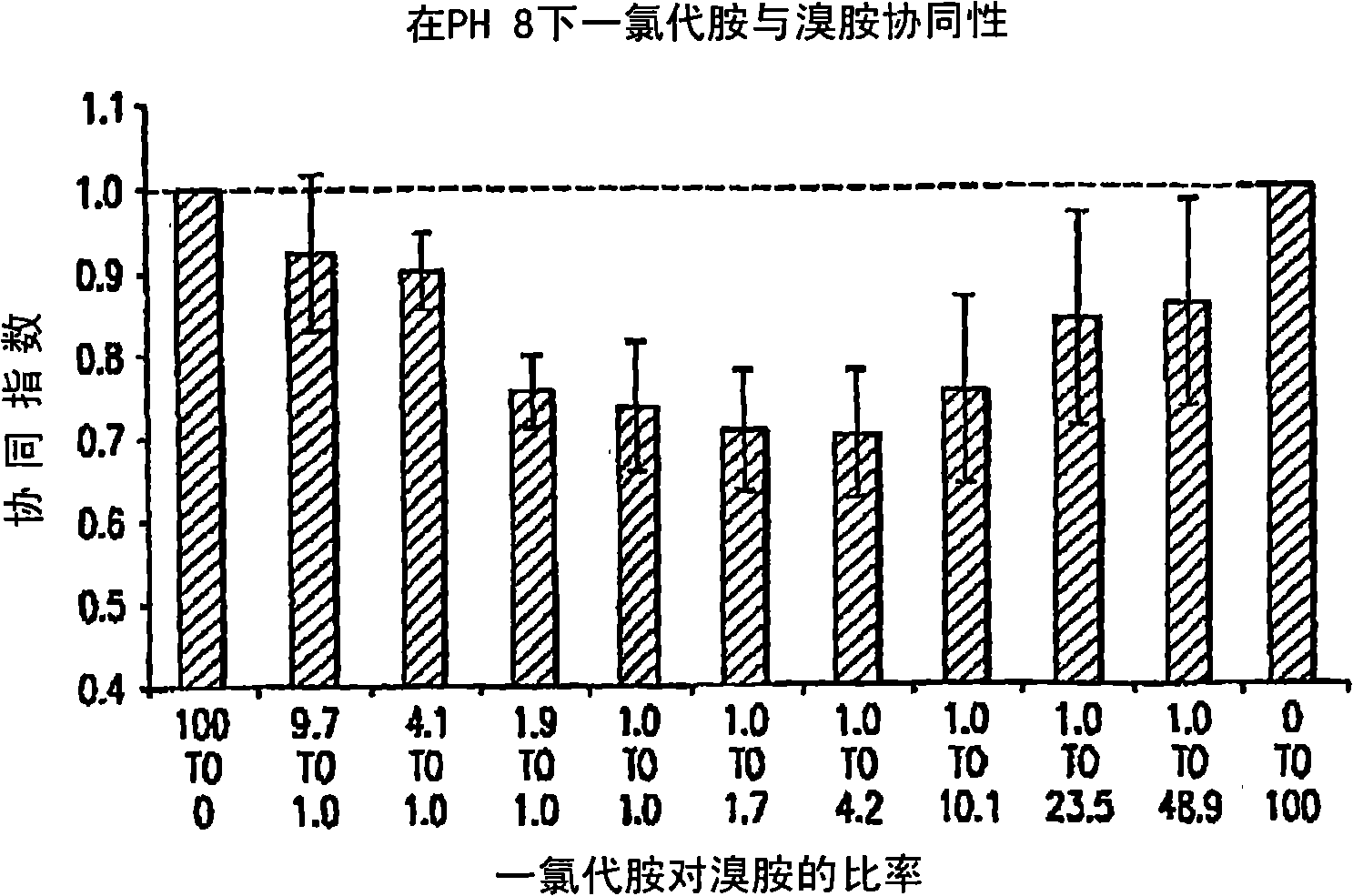A synergistic biocide and process for controlling growth of microorganisms
A microbial, water control technology, applied in the direction of biological control chemicals, plant growth regulators, botanical equipment and methods, etc., can solve the problems of high volatility and odor, use, etc.
- Summary
- Abstract
- Description
- Claims
- Application Information
AI Technical Summary
Problems solved by technology
Method used
Image
Examples
Embodiment 1
[0091] A measured amount of monochloramine and a measured amount of dichloramine are added to the bacterial suspension and the cell suspension incubated for a certain period of time. The efficacy of the antimicrobial mixture was determined by measuring its growth or loss after an additional appropriate incubation time. This sample demonstrates synergistic activity between monochloroamine and dichloroamine on artificial bacterial consortia in synthetic white water at pH 5.5 and 8.0 under a simultaneous feeding strategy. A synergy index value of <1.00 indicates a synergistic effect of the two active substances.
[0092] Table 1 Synergy index of mixtures of monochlorinated and dichlorinated amines
[0093]
[0094]
[0095] Table 1 shows the synergy between monochloroamines and dichloroamines. This synergy is affected by pH. For example, the synergistic ratio of monochloroamine and dichloroamine is broader at pH 8 than at pH 5. At higher pH, the ratio of monochloroamine...
Embodiment 2
[0097] In this example, a measured amount of monochloramine and a measured amount of dichloramine were added to a prepared density of about 1×10 6 cells per milliliter of the bacterial consortium and incubate the cell suspension for a certain period of time. The bacterial consortium is as described above. The efficacy of the antimicrobial mixture was determined by measuring the number of surviving bacteria after the contact time. The efficacy of monochloramine, dichloramine and mixtures of these two active substances was compared at different pH values. Bacterial consortiums are prepared in inorganic salt solutions, pH adjusted to a selected value, and immunized with monochloramines and dichloramines and combinations thereof. Samples were collected at regular intervals to count the number of surviving bacteria.
[0098] Table 2 Number of surviving bacteria after 20 minutes of contact with monochloramine (MCA), dichloramine (DCA) and mixtures thereof. Quantity is log 10 tr...
Embodiment 3
[0102] Although synergy was detected when monochloramine and dichloramine were mixed in a 1:1 ratio, the results of Example 1 indicated that the optimal ratio was greater than 1:1 (monochloramine:dichloramine). In this example, the bacterial consortium was prepared by adjusting the pH of the inorganic salt solution to a selected level immediately prior to the addition of the cells. By mixing appropriate amounts of 30% ammonium hydroxide and 6.2% sodium hypochlorite in a volume of deionized water to obtain an equimolar ratio of Cl - and NH 2 + to prepare the desired concentration of monochloramine. After preparing the monochloramine solution, its purity was checked by measuring the absorption spectrum of the solution. To prepare the dichloroamine solution, adjust the pH of the monochloramine solution to below 3.0. This ensures the conversion of monochlorinated amines to dichloroamines. The spectral characteristics of the dichloroamine solution indicated that the pH drop of...
PUM
 Login to View More
Login to View More Abstract
Description
Claims
Application Information
 Login to View More
Login to View More - R&D
- Intellectual Property
- Life Sciences
- Materials
- Tech Scout
- Unparalleled Data Quality
- Higher Quality Content
- 60% Fewer Hallucinations
Browse by: Latest US Patents, China's latest patents, Technical Efficacy Thesaurus, Application Domain, Technology Topic, Popular Technical Reports.
© 2025 PatSnap. All rights reserved.Legal|Privacy policy|Modern Slavery Act Transparency Statement|Sitemap|About US| Contact US: help@patsnap.com



